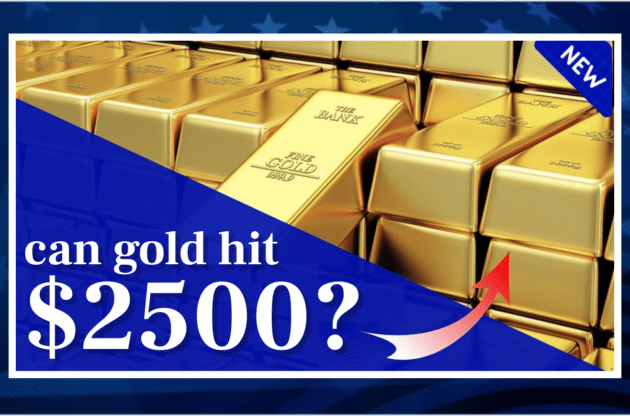
In late January, Goldman Sachs released a report where they concluded that now is the time to buy gold. To summarize, they based the forecast primarily on rising inflation, a slowing US economy, and anticipated rate hikes, and those factors are still very much in play. Less weight was given to geopolitical tension, but with Russia’s invasion of Ukraine, that has changed.
The rush to gold as a defensive asset
We’re already seeing gold react to the war as investors seek out safe-haven assets. During trading on March 8, the spot price of gold reached $2,064.71 per ounce, just a whisk away from its all-time high from August 2020. Currently, gold trades at over $1,950 per ounce.
On the back of the war in Ukraine and the rising geopolitical tensions between Russia and the US–Europe alliance, Goldman Sachs has revised its forecast for the price of gold:
“The last time that we saw all major demand drivers accelerate simultaneously was in 2010–2011 when gold rallied by almost 70%. Given the material upward revision in investment and demand assumptions, we now upgrade our 3-/6-/12-month gold targets from $1,950/2,050/2,150 an ounce to $2,300/2,500/2,500 per ounce,” the investment bank wrote in a recent note.
In other words, its base case for its 12-month forecast for gold is up from $2,150 to $2,500.
Russia’s central bank may increase their gold reserves
Goldman Sachs sees both central bank and retail demand for gold rise. As a consequence of the war, it said, Russia will not only hold on to its gold reserves but will likely also return to being a large gold buyer after the ruble settles, and other countries may follow suit.
The bank expects that the gold demand by central banks will reach its historical high level because central banks have both diversification and geopolitical reasons to shift reserves into the precious metal. And Goldman expects that trend to continue:
“We expect that by the second half of 2023, global central bank demand hits a record 750 tons annual rate versus 450 tons in 2021.”
What’s next for the price of gold?
If central banks increase their gold reserves, the demand for gold could push prices even higher. But the focus is, of course, on the war. How it unfolds could have a huge impact on financial markets across the globe and impact the demand for gold.
The cost of living is also being affected. The latest CPI shows inflation reaching 7.9% for the year ending in February 2022, up from 7.5% a month ago, and the high inflation is likely to persist. Gas prices, for instance, were already soaring before the war, and with Biden’s ban on imports of Russian oil, we’re unlikely to see prices reverse anytime soon. In fact, it could be argued that we’ll see even higher inflation as the rising costs of energy and food start seeping into the CPI.
Considering all the uncertainties we were already facing before the war — soaring inflation, slowing economy, the prospects of rate hikes — Goldman Sachs’ forecast could very well become reality.
The post Gold on a Historic Tear: Why Goldman Sachs Just Raised Their Gold Forecast appeared first on Gold Alliance.




